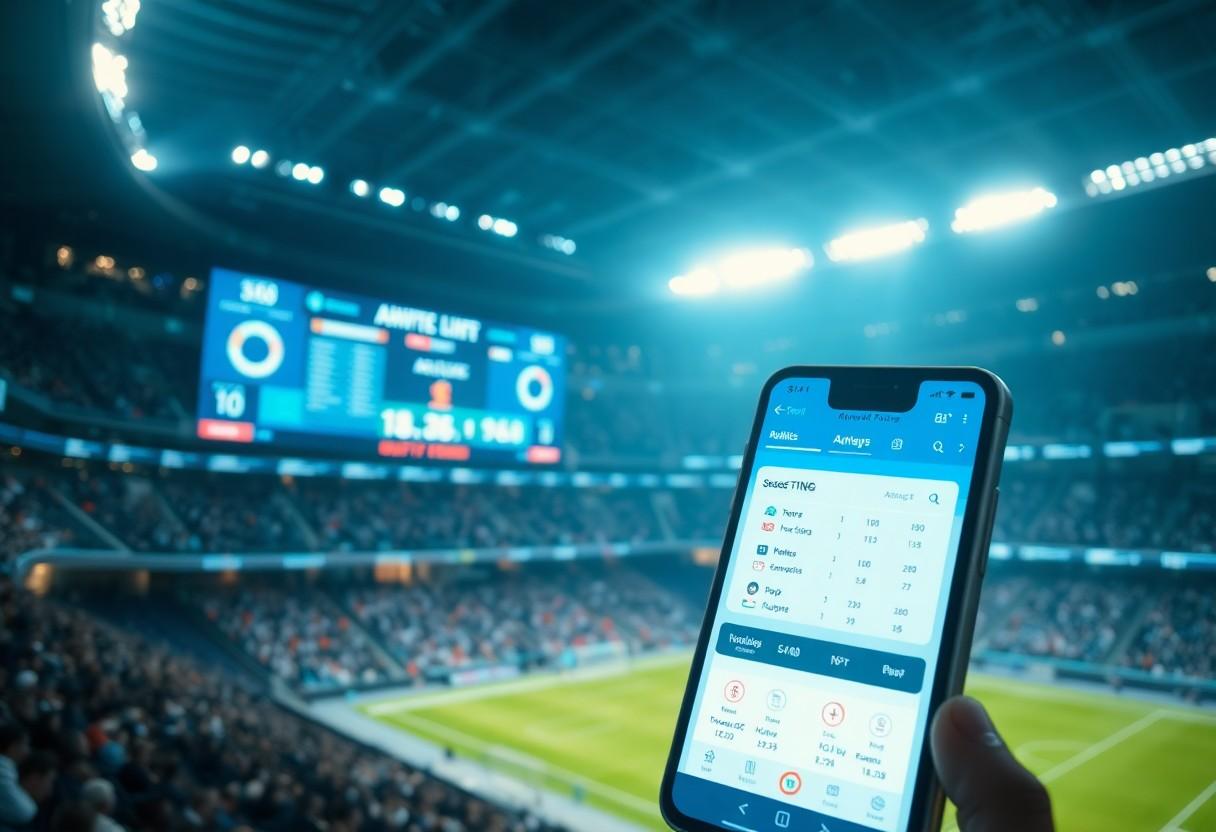
Advanced Metrics for Smarter Football Betting
Football betting has evolved far beyond simple win-loss predictions, and if you want to gain a competitive edge, you need to understand the advanced statistical metrics that professional bettors rely on. Traditional statistics like goals scored and possession percentages only scratch the surface of what’s really happening on the pitch. Expected Goals (xG), defensive actions per game, and player heat maps provide deeper insights into team performance and can reveal value bets that casual punters miss. By incorporating these sophisticated analytical tools into your betting strategy, you’ll make more informed decisions based on data-driven evidence rather than gut feelings, ultimately improving your long-term profitability in football wagering.
Deciphering the Data: Stats That Matter
Raw statistics tell only part of the story when you’re analyzing football matches for betting opportunities. Expected Goals (xG) provides a more accurate picture than actual goals scored, as it measures the quality of chances created rather than just the end result. Similarly, possession percentage means little without context – Manchester City’s 70% possession against a defensive side carries different implications than the same figure against an attacking team. You need to dig deeper into metrics like progressive passes, defensive actions in the final third, and shot conversion rates to understand true team performance.
Key Performance Indicators (KPIs) for Teams and Players
Team-level KPIs focus on attacking efficiency, defensive solidity, and transitional play. Goals per game and clean sheet percentage provide baseline measurements, but you should prioritize metrics like shots on target percentage, aerial duel success rate, and counter-attack conversion. For individual players, traditional stats like goals and assists need supplementing with touches in the penalty area, successful dribbles per game, and defensive contributions. A striker averaging 0.8 xG per game with poor finishing presents different betting value than one converting chances above expected rates.
Transitioning From Basic Stats to Advanced Analytics
Moving beyond goals, assists, and wins requires understanding context-dependent metrics that reveal underlying performance patterns. Advanced analytics expose the difference between sustainable success and temporary variance, helping you identify teams due for regression or improvement. Expected Points (xPts) models, for instance, often predict future results more accurately than current league position, while heat maps and passing networks reveal tactical vulnerabilities that basic stats miss completely.
- Analyze Expected Goals (xG) trends over 5-10 match periods
- Compare actual results to Expected Points models
- Track progressive passing statistics for attacking potential
- Monitor defensive line height and pressing intensity
- Evaluate set-piece efficiency both offensively and defensively
| Basic Metric | Advanced Alternative |
|---|---|
| Goals Scored | Expected Goals (xG) |
| Shots | Shots on Target % |
| Possession % | Progressive Passes |
| Tackles | Defensive Actions in Final Third |
| Corners Won | Set Piece Conversion Rate |
Professional bettors increasingly rely on multi-metric models that weight different statistics based on predictive value and match context. These models account for opponent strength, venue effects, and recent form while filtering out statistical noise that misleads casual observers. You can build similar frameworks by tracking how specific metrics correlate with actual match outcomes in different scenarios – home favorites versus away underdogs, high-scoring leagues versus defensive competitions, and early season uncertainty versus late-season form patterns.
- Weight metrics based on league-specific predictive accuracy
- Adjust for opponent quality using strength ratings
- Factor in venue effects and travel considerations
- Account for squad rotation and fixture congestion
- Incorporate weather and pitch condition variables
| Context Factor | Statistical Adjustment |
|---|---|
| Home Advantage | +0.3 to +0.7 goal expectancy |
| Rest Days | Performance decline after <3 days |
| Temperature | Pace changes in extreme conditions |
| Referee Style | Cards/fouls per game variance |
| Motivation Level | End-season position battles
The Role of Machine Learning in Predictive ModelsMachine learning algorithms have revolutionized football betting by processing vast datasets that human analysts simply cannot handle efficiently. Neural networks can analyze over 200 variables simultaneously, including player tracking data, weather conditions, and historical matchup patterns to generate probability distributions for match outcomes. These systems continuously learn from new data, automatically adjusting their weighting of different factors based on predictive success rates. Top-tier models achieve accuracy rates of 55-60% on match outcomes, which may seem modest but translates to significant profitability when applied consistently across thousands of predictions with proper bankroll management. How Algorithms Enhance Betting PredictionsAdvanced algorithms excel at identifying subtle patterns that escape traditional analysis methods. Gradient boosting models can detect that teams perform 12% worse when traveling more than 1,000 miles for away games, while also factoring in the specific day-of-week effects and rest periods. These systems process real-time data feeds, adjusting predictions as lineups are announced or weather conditions change. Ensemble methods combine multiple algorithms, with random forests handling categorical variables like referee assignments while regression models focus on continuous metrics like expected goals, creating more robust predictions than any single approach. Evaluating the Accuracy of Model OutputsModel validation requires rigorous backtesting across multiple seasons using walk-forward analysis to prevent data leakage. Successful models maintain consistent performance across different leagues and time periods, with accuracy measured through metrics like log-loss and calibration plots rather than simple win percentages. Cross-validation techniques split historical data into training and testing sets, ensuring predictions remain reliable when applied to unseen matches. Calibration becomes particularly important when assessing probability estimates from your models. A well-calibrated model that predicts 70% win probability should see those outcomes occur roughly 70% of the time across a large sample. You can evaluate this through reliability diagrams that plot predicted probabilities against actual outcomes, revealing whether your model is overconfident or underconfident in certain probability ranges. Additionally, tracking the Brier score provides a comprehensive measure that penalizes both poor discrimination and poor calibration. Professional betting syndicates typically require Brier scores below 0.25 for soccer match outcomes before deploying significant capital, as higher scores indicate insufficient predictive power to overcome typical bookmaker margins of 2-5%. Identifying Value Bets Through Market AnalysisMarket analysis separates profitable bettors from those who rely on gut instinct alone. You’ll discover value by examining how bookmakers set their lines and where public perception creates pricing inefficiencies. Professional bettors consistently find edges by analyzing line movements, tracking sharp money, and identifying when the market overreacts to recent events. The key lies in understanding that bookmakers aren’t trying to predict exact outcomes—they’re balancing their books while accounting for public bias and ensuring profit margins. Recognizing Price Movements and Betting LinesLine movements reveal the story behind each bet, showing you where smart money flows versus public sentiment. Sharp bettors typically place large wagers early, causing lines to move 2-3 points within hours of opening. You can capitalize on reverse line movement—when betting percentages favor one side but the line moves toward the less popular team. Steam moves, where multiple sportsbooks adjust lines simultaneously, indicate significant sharp action and often present opportunities on the opposite side once the movement stabilizes. Understanding Implied Probability Versus Actual ProbabilityImplied probability converts betting odds into percentage chances, but your edge comes from calculating actual probability more accurately than the market. A -110 line implies 52.4% probability, yet you might determine the true chance is 58% based on your analysis. This 5.6% difference represents significant value over time. Successful bettors maintain detailed models that consistently identify these discrepancies, focusing on situations where their calculated probability exceeds the implied probability by at least 3-5%. Your probability calculations should incorporate factors the market often overlooks or weighs incorrectly. Weather conditions affecting passing games, key player injuries that ripple through entire offensive schemes, or coaching tendencies in specific game situations frequently create pricing inefficiencies. Professional models often find the biggest edges in player prop markets and alternative spreads, where bookmakers have less sophisticated pricing mechanisms. You’ll also discover value in live betting markets, where rapid game developments create temporary mispricings before algorithms can adjust. The most profitable approach involves building your own probability models using advanced metrics like EPA, DVOA, and situational performance data, then comparing these calculations against market prices across multiple sportsbooks to identify the largest discrepancies. Psychological Factors: The Human Element in BettingYour brain operates on predictable patterns that can sabotage even the most data-driven betting strategies. Emotional decision-making overrides logical analysis when money is at stake, leading to impulsive bets based on gut feelings rather than statistical evidence. Confirmation bias causes you to seek information that supports your preferred outcome while ignoring contradictory data. Loss aversion makes you chase losses with increasingly risky bets, while overconfidence leads to oversized stakes after winning streaks.
Knowing these psychological traps allows you to implement systematic checks that keep emotions from derailing your analytical approach. Cognitive Biases That Influence Betting DecisionsAnchoring bias locks you onto the first odds you see, preventing proper line shopping across multiple sportsbooks. Recency bias makes last week’s 40-point performance seem more predictive than a full season of data. Availability heuristic causes you to overvalue memorable events – like a dramatic comeback – while underweighting consistent statistical trends. Professional bettors combat these biases by using systematic checklists and predetermined criteria that remove emotional decision-making from the equation. Knowing your mental blind spots helps you recognize when psychology is overriding sound analysis. The Impact of Social Sentiment on Market TrendsPublic betting sentiment creates predictable market inefficiencies that sharp bettors exploit regularly. When 80% of bets favor the popular team, oddsmakers adjust lines to balance their liability, often creating value on the unpopular side. Social media buzz and mainstream coverage amplify these trends, pushing casual money toward trendy picks. Contrarian betting strategies capitalize on this phenomenon by identifying when public perception diverges from actual team performance. Knowing how crowd psychology moves betting lines helps you spot opportunities where sentiment has overcorrected market prices. Social sentiment tracking tools reveal fascinating patterns in how public opinion shapes betting markets. Twitter sentiment analysis shows that teams generating positive social media buzz receive 15-20% more betting volume than statistical models would predict. Reddit discussions and sports talk radio create echo chambers that amplify certain narratives while ignoring contradictory evidence. Sharp bettors monitor these sentiment indicators not to follow the crowd, but to identify when emotional money has pushed lines away from true probability. The most profitable opportunities often emerge when social sentiment reaches extreme levels – either overwhelmingly positive or negative – creating market inefficiencies that data-driven analysis can exploit. Fade-the-public strategies work particularly well in primetime games and playoff scenarios where casual betting volume peaks and emotional decision-making overrides rational analysis. Creating a Structured Betting StrategyYour betting strategy transforms from guesswork into systematic profit generation when you establish clear protocols for stake sizing, market selection, and risk assessment. Professional bettors typically risk only 1-3% of their total bankroll per wager, while recreational players often stake 10-20% without realizing the mathematical impossibility of long-term success. You’ll need predetermined criteria for identifying value bets, specific thresholds for acceptable odds ranges, and documented rules for when to increase or decrease your position sizes based on confidence levels and market inefficiencies. Bankroll Management Techniques for Long-term SuccessThe Kelly Criterion provides the mathematical foundation for optimal bet sizing, calculating your ideal stake as a percentage of edge divided by odds. A bettor with a 55% win rate at -110 odds should wager approximately 2.27% of their bankroll per bet to maximize long-term growth while minimizing ruin probability. You can implement a fractional Kelly approach, using 25-50% of the calculated amount to reduce volatility. Track your Return on Investment (ROI) weekly rather than daily, as short-term variance can mislead your decision-making process and cause emotional betting adjustments. Adapting to Changing Conditions: Wear and Tear of TeamsTeam performance deteriorates predictably throughout the season, with NFL teams averaging 2.1 fewer points per game in weeks 14-17 compared to weeks 1-4. Injury reports only reveal part of the story – accumulated fatigue affects decision-making speed, reduces explosive play frequency, and increases turnover rates. You should weight recent performances more heavily than early-season data, particularly for teams with thin depth charts or aging rosters. Physical degradation manifests differently across position groups, creating exploitable betting opportunities throughout the season. Offensive lines show the most dramatic decline, with sack rates increasing by 23% in the final month compared to September performance levels. Running backs over 28 years old experience sharp efficiency drops after carrying 200+ touches, while cornerbacks playing through minor injuries allow completion rates 8-12% higher than their healthy baselines. You can capitalize on these trends by monitoring snap counts, target shares, and pressure rates rather than relying solely on traditional box score statistics. Vegas oddsmakers often lag behind these physical realities by 1-2 weeks, particularly for teams playing on short rest or in adverse weather conditions where fatigue becomes amplified. Summing upUpon reflecting on advanced metrics for smarter football betting, you now possess sophisticated tools that extend far beyond basic statistics. Your understanding of expected goals, defensive actions per game, and possession-adjusted metrics provides you with analytical advantages over casual bettors. These data-driven approaches allow you to identify value in markets where bookmakers may have overlooked nuanced team performances. By incorporating these advanced measurements into your betting strategy, you can make more informed decisions that account for underlying team strengths and weaknesses that traditional statistics often miss, ultimately improving your long-term betting success. |



